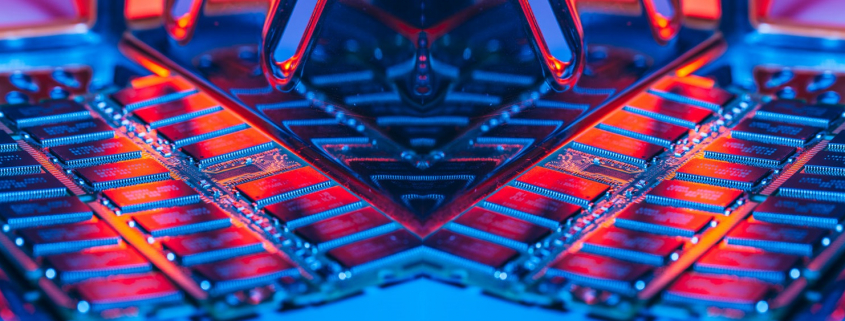In-memory Data Grid vs. Distributed Cache: Which is Best?
Distributed caching has been a boon for IT professionals in the past due to its ability to make data always available even when offline. However, with the growing popularity of the Internet of Things (IoT) and the increasing amounts of data businesses need to process daily, distributed caching is slowly being overshadowed by a newer and more robust technology solution—the in-memory data grid (IMDG).
Distributed caches allow organizations to combine the amount of memory of computers within a network, boosting performance at minimum cost because there’s no need to purchase more disk storage or more high-end computers. Essentially, a data cache is distributed among all networked computers so that applications can use all available memory when needed. Memory is pooled into a single data store or data cache to provide faster access to data. Distributed caches are typically housed in a single physical server kept on site.
The main challenge of distributed caching today is that in-memory data grids can do distributed caching—and much more. What used to be complicated tasks for data analysts and IT professionals has been made simpler and more accessible to the layman. Data analytics, in particular, has become vital for businesses, especially in the areas of marketing and customer service. Nowadays, there are solutions available that present data via graphs and other visualizations to make data mining and analysis less complicated and quicker. The in-memory data grid is one such solution, and is one that’s gradually gaining popularity in the business intelligence (BI) space.
In-memory computing has almost pushed the distributed cache to a realm of obsolescence, so much so, that the remaining organizations that gold onto it as a solution are those that are afraid to embrace digital transformation or those that do not have the resources. However, this doesn’t mean that the distributed cache is less important in the history of computing. In its heyday, distributed caching helped solve a lot of IT infrastructure problems for a number of businesses and industries, and it did all of that at minimal cost.
Distributed Cache for High Availability
The main goal of the distributed cache is to make data always available, which is most useful for companies that require constant access to data, such as mobile applications that store information like user profiles or historical data. Common use cases for distributed caching include payment computations, external web service calls, and dynamic data like number of views or followers. The main draw, however, is how it allows users to access cached data whether the user is online or offline, which, in today’s always-connected world, is a major benefit. Distributed caches take note of frequently accessed data and keep them in process memory so there’s no need to repeatedly access disk storage to get to that data.
Typically, distributed caches offered simplicity through simple “put” and “get” operations through distributed key/value stores. They’re flexible enough, however, to handle more complicated processes through read-through and write-through instances that allow caches to read and write values to and from disk. Depending on the implementation, it can also handle ACID transactions, data replication, and active backups. Ultimately, distributed caching can help handle large, unpredictable amounts of data without sacrificing read consistency.
In-memory Data Grid for High Speed and Much More
The in-memory data grid (IMDG) is not just a storage solution; it’s a powerful computing solution that has the capability to do distributed caching and more. Designed to use RAM and eliminate the need for constant access to disk-based storage, an IMDG is able to process complex data for large-scale implementations at high speeds. Similar to distributed caching, it “distributes” the workload to a multitude of computers within a network, not only combining available RAM but also the computing power of all available computers.
An IMDG runs specialized software on each computer to enable this and to minimize movement of data to and from disk and within the network. Limiting physical disk access eliminates the bottlenecks usually caused by disk-based storage, since using disk in data processing means using an intermediary physical server to move data from one storage system to another. Consistent data synchronicity is also a highlight of the IMDG. This addresses challenges brought about by the complexity of data retrieval and updating, helping to speed up application development. An IMDG also allows both the application and its data to collocate in a single memory space to minimize latency.
Overall, the IMDG is a cost-effective solution because it all but eliminates the complexities and challenges involved in handling disk-based storage. It’s also highly scalable because its architecture is designed to scale horizontally. IMDG implementations can be scaled by simply adding new nodes to an existing cluster of server nodes.
In-memory Computing for Business
Businesses that have adopted in-memory solutions currently enjoy the platform’s relative simplicity and ease of use. Self-service is the ultimate goal of in-memory computing solutions, and this design philosophy is helping typical users transition into “power users” that expect high performance and more sophisticated features and capabilities.
The rise of in-memory computing may be a telltale sign of the distributed cache’s eventual exit, but it still retains its use, especially for organizations that are just looking to address current needs. It might not be an effective solution in the long run, however, as the future leans toward hybrid data and in-memory computing platforms that are more than just data management solutions.

